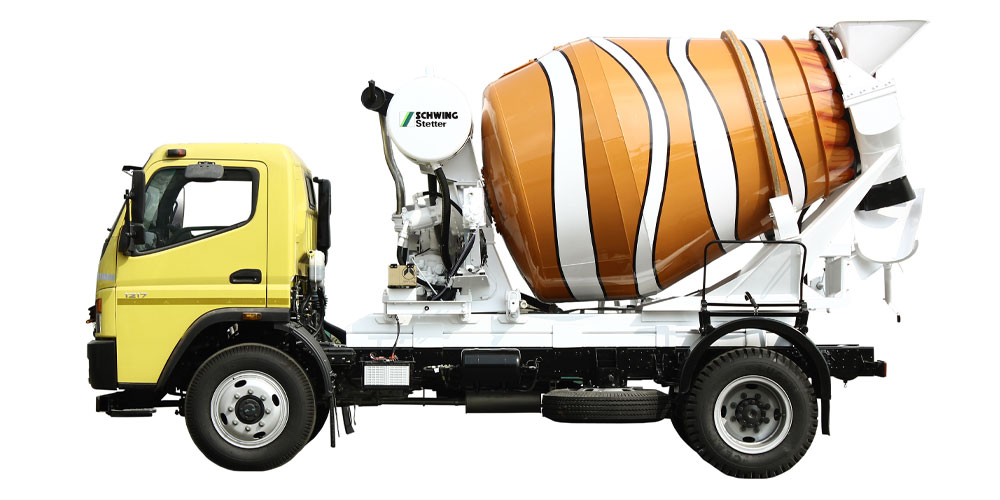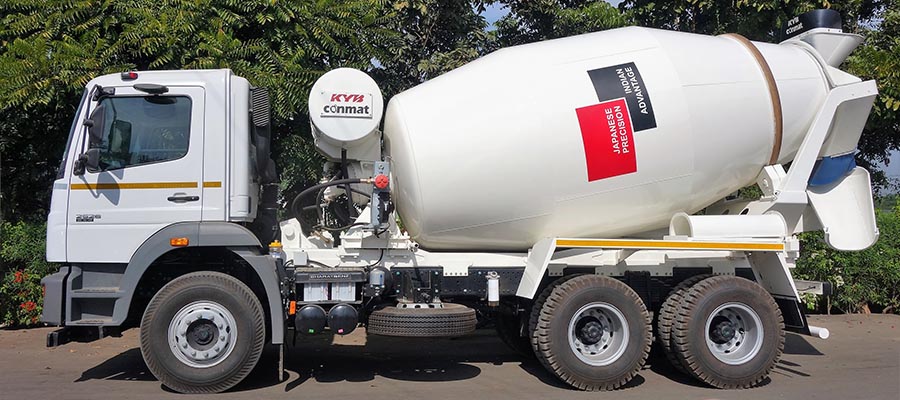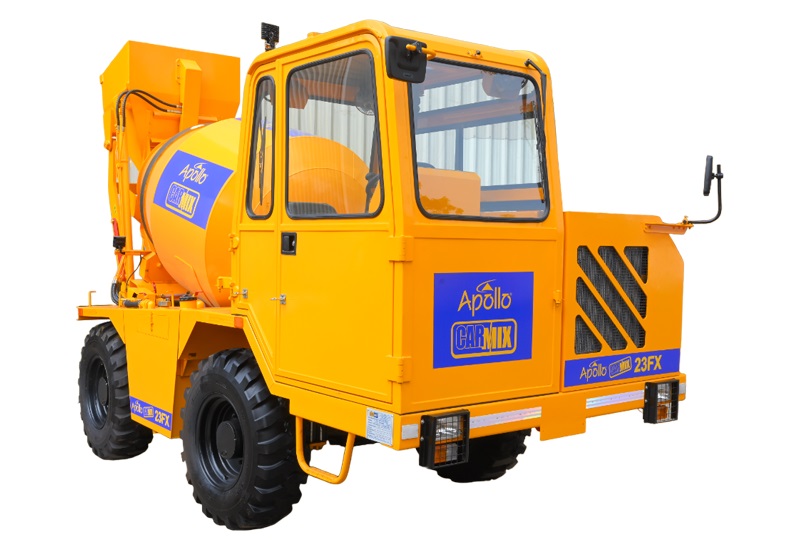A concrete transit mixer is used to transport freshly mixed concrete from a concrete batching plant to the construction site. It features a rotating drum mounted on the rear of the truck, which continuously mixes the concrete to maintain its consistency and prevent it from setting during transit. The drum is typically made of durable steel and contains fins or blades inside to facilitate thorough mixing. This mobile mixing capability ensures that the concrete arrives at the construction site in a workable state, ready for immediate use in various types of projects.
Where are concrete transit mixers used?
- Residential construction projects
- Commercial construction projects
- Infrastructure projects
- Public works projects
- Landscaping and hardscaping projects
- Industrial projects
- Renovation and rehabilitation projects
Advantages of concrete transit mixers
- Efficient transportation of freshly mixed concrete to construction sites
- Continuous mixing during transit ensures uniformity and consistency of the concrete
- Reduces labour costs associated with on-site mixing
- Minimises material waste by delivering precise quantities of concrete
- Enables timely delivery of concrete, reducing construction delays
- Increases productivity by eliminating the need for manual mixing at the site
- Facilitates easy discharge of concrete at the desired location
- Reduces the need for additional equipment such as mixers or pumps on-site
- Improves safety by minimising manual handling of heavy concrete batches
- Allows for adjustments to concrete consistency during transportation by adding water
- Enables flexibility in scheduling and delivery, especially for large or remote projects
- Reduces the environmental impact by minimising emissions associated with on-site mixing
- Enhances quality control by ensuring consistent mixing and delivery standards
- Reduces the risk of concrete segregation during transportation
- Enables the transportation of large volumes of concrete in a single trip
- Offers flexibility in scheduling deliveries to accommodate changing project needs
- Helps to meet tight project deadlines by ensuring timely and reliable concrete deliveries
- Reduces the potential for concrete spillage and waste during transportation
Types of transit concrete mixers
1. Standard Transit Mixers: Standard transit mixers are the workhorses of the construction industry, featuring a rotating drum mounted on a truck chassis. They come in various sizes and capacities, ranging from smaller units suitable for residential projects to larger trucks capable of handling commercial and industrial construction. The rotating drum continuously mixes the concrete during transportation, ensuring uniformity and consistency. Standard transit mixers are versatile and widely used due to their reliability, efficiency, and ability to deliver large volumes of concrete to construction sites.

2. Agitator Transit Mixers: Agitator transit mixers have a unique design, with a stationary drum and an internal agitator system. The agitator consists of rotating blades or paddles that continuously mix the concrete inside the drum during transit. This design ensures thorough mixing and prevents segregation of the concrete ingredients. Agitator transit mixers are preferred for applications where maintaining concrete quality and consistency is crucial, such as in high-performance concrete projects or when transporting specialty mixes. They offer precise control over the mixing process and are often used in projects that require strict adherence to mix design specifications.

3. Volumetric Transit Mixers: Volumetric transit mixers feature separate compartments for storing the ingredients of concrete, including cement, aggregates, and water. These mixers offer on-site mixing capabilities, allowing operators to adjust mix designs and produce concrete in precise quantities as needed. Volumetric mixers provide flexibility and versatility, making them ideal for projects with changing concrete requirements or remote construction sites where access to ready-mix concrete may be limited. They are commonly used in applications such as road repairs, landscaping projects, and small-scale construction.

4. Self-Loading Transit Mixers: Self-loading transit mixers are equipped with a built-in loading mechanism, such as a loading bucket or conveyor belt system, allowing them to self-load aggregates, cement, and water at the batching plant or on-site. These mixers offer convenience and efficiency by eliminating the need for additional equipment or manual loading. Self-loading transit mixers are well-suited for projects in remote or challenging environments where access to traditional concrete delivery methods is limited. They are commonly used in infrastructure projects, mining operations, and rural construction projects.

5. Mini Transit Mixers: Mini transit mixers are compact in size and capacity compared to standard transit mixers, making them suitable for small-scale construction projects or projects with limited space. These mixers offer manoeuvrability and agility, allowing them to navigate tight urban streets or confined construction sites with ease. Mini transit mixers are often used for residential construction, landscaping projects, and interior renovations where smaller quantities of concrete are required. Despite their smaller size, mini transit mixers deliver the same quality and reliability as larger units, making them a versatile choice for a wide range of applications.
6. Trailer-Mounted Transit Mixers: Trailer-mounted transit mixers are similar to standard transit mixers but are mounted on trailers instead of truck chassis. These mixers offer flexibility in transportation and mobility, as they can be towed by different vehicles or stationed at temporary construction sites. Trailer-mounted transit mixers are commonly used for mobile concrete batching plants, temporary construction projects, or applications where frequent relocation is required. They provide an efficient solution for delivering concrete to remote or hard-to-reach locations, offering versatility and convenience in various construction scenarios.
7. Rotating Drum Transit Mixers: Rotating drum transit mixers feature a drum that rotates on its axis, similar to a cement mixer. These mixers are often smaller in size and are suitable for smaller-scale construction projects or DIY applications. They are manually operated and can be powered by electricity, gasoline, or hand-crank mechanisms. Rotating drum transit mixers are commonly used for tasks such as mixing concrete for sidewalks, patios, or small foundations. They offer simplicity and affordability, making them a practical choice for occasional concrete mixing needs or projects with limited budgets.
Conclusion
Concrete transit mixers play an important role in efficient concrete handling ,transporting freshly mixed concrete to job sites. Their design, capacity, and features are tailored to meet the demands of various types of projects, ensuring timely delivery and optimal quality of concrete. As technology advances, transit mixers continue to evolve, offering enhanced efficiency, durability, and sustainability to meet the ever-growing needs of the construction and infrastructure sector.
Image Source: macons.co.in, schwingstetterindia.com, apollocarmix.com, conmatindia.com

